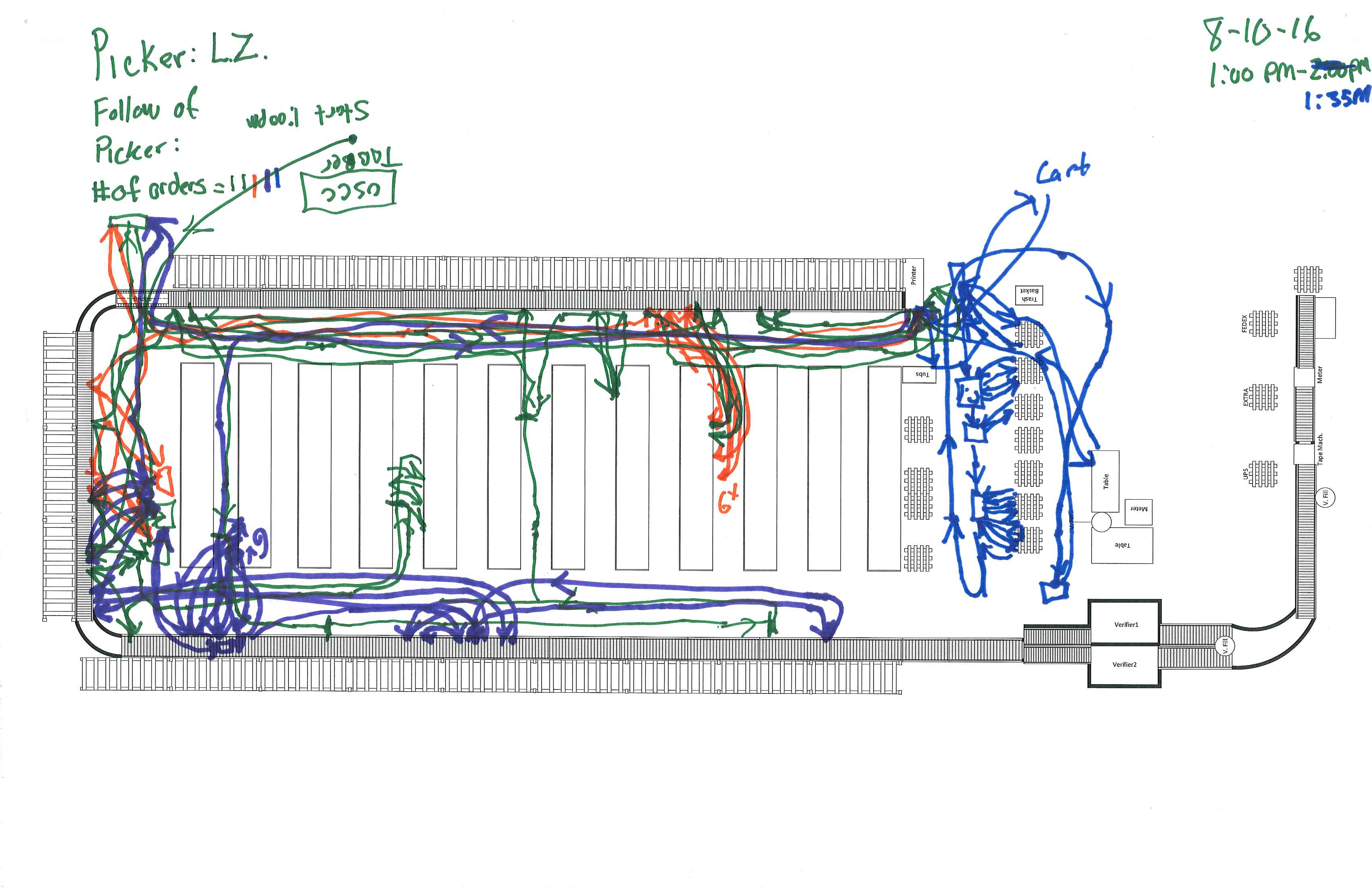“The process is broken!” “What is the problem?” “Can we do it better?” “Because we have always done it this way.” These might be some common phrases used across your company — especially in a mail center. So, what is the best way to tackle the process and answer the questions? There are tools and processes in the Lean toolbox to help. The buzz words of Kaizen, Lean Manufacturing, and Six Sigma may sound familiar. The bad news is, these terms may seem overwhelming, complex, or outside the skill set of employees. The good news is, this is not true. Let’s break down these tools and philosophies into simple understanding and find which ones will work best for your business practices.
Finding the Right Fit
Kaizen, by definition, means to take apart and make good. The intent is to continuously improve all functions, processes, and involve all employees – from the CEO to the assembly line worker. Lean Manufacturing is a management philosophy derived from the Toyota Production System. Lean Manufacturing is a systematic method for elimination of waste in a process or reduction of non-value added work. Six Sigma is a step further. Six Sigma seeks to improve the quality of the output of a process to identify and remove causes of defect and reduce variability in these processes. Each Six Sigma project follows a defined sequence of steps and has specific value targets. For example, the goal may be to reduce process cycle time, reduce pollution, reduce costs, or increase customer satisfaction. Never mind the lingo, technical jargon, and proper implementation of these philosophies — they all mean the same thing: continuous improvement. Let’s talk about the benefits and tools that work!
Continuous improvement initiatives allow a company to eliminate waste and delays, remove interruptions, and create collaboration across the organization for creative solutions and engagement in daily activities. Perhaps even more importantly, it allows a company to increase customer satisfaction, thereby retaining their business. Kaizen is a great place to start in order to achieve all of these benefits.
The Kaizen process focuses on an identified problem or defect in the process. All those involved directly with the process, some upstream from the process and some downstream, should be included in the problem solving. It is also beneficial to include someone with no involvement for a fresh and neutral perspective. All team members should assemble and map the current process. This current state map should include the entire flow of the process considering all data such as inventory, materials, and customer requirements. A great way to visualize the process is to draw on a whiteboard. This visualization allows you to see waste and redundancy in the process and initiate plans on how to improve. Once the current state map is done, encourage all team members to share improvement ideas. The team may identify a better way to conduct the process, remove unnecessary or non-value added work, or steps to automate. Remember: small, incremental improvements are key! Once the improvement ideas are gathered, the process can be reconstructed to the future state or the new, improved process. Implement the changes and track the success of these changes. Because of complexity or changing business environment, some processes may require several reiterations of Kaizen or improvement. This does not indicate a failure. As long as improvement and learning are achieved, success is inevitable.
Getting to the Root of the Problem
While Kaizen is a process to fix a problem, it is quite possible that, because of internal or customer feedback, there is an issue but the root cause is unknown. Several tools exist to identify root cause before improvement efforts are under way. It is important to determine the root cause to avoid spending valuable resources to treat the symptom(s) of a problem. The process of asking the “5 Whys” is a great way to start. Here is a common example and application of the 5 Whys. Write down the specific problem: I got caught speeding. Ask the question: Why? Write down the answer: I was late for work. Ask why again and write down the answer: I got up late for work. Repeat. Alarm clock didn’t work. Repeat. Batteries were dead. Repeat again. I forgot to replace them. The process of asking why five times leads to the root cause: I need to get an alarm clock that plugs into the wall and replace the batteries often. By uncovering this root cause, the problem can be completely avoided in the future.
Fishbone diagrams are another tool used for root cause analysis. The causes of a problem are grouped into major categories: People, Methods, Machines, Materials, Measurement, and Environment. The act of grouping the causes into categories and discussing amongst the team formulizes a problem, and the group can then work to improve the specific issue. Furthermore, don’t forget to keep Pareto charts. This chart focuses on the rule that 80% of the effects come from 20% of the causes. The left axis of the chart is the frequency of the issue, while the right axis is the cumulative percentage of the total number of occurrences. Over time, the compilation of these inputs on the chart visually represents the greatest opportunity for improvement.
This is an example of a spaghetti diagram, which is applicable to both office and production environments. Start with an overhead view of the area drawn to scale and labeled. Use colored pencils or markers to differentiate between trips. A measuring wheel or tape is useful to calculate distance – less distance = less time! Follow the route traveled as soon as the process begins. Use directional arrows to indicate direction of travel. Don’t leave out any movement. The cluttered areas of the diagram represent areas of opportunity for improvement. This diagram will help you see where material or a process stops, is staged, held, inspected, and picked up. Look for opportunities to move materials, tools, and paperwork to reduce all wastes.

More Ways than One
There are many other ways to lead continuous improvement efforts: 5S – a way to organize and standardize work areas; Kanban – inventory control method to avoid under- or over-production; as well as standardized work and cross-training, which achieves stability, ensures coverage and continuity, and reduces risk. All are simple tools for incremental improvements to achieve success in all business processes.
No matter how technical or simplistic these tools are implemented, the goal is to improve. Use the tools that work best for your organization. Start small. Involve all organizations across the business. Find the problem. Find a solution. Implement the findings. Track the successes and areas of opportunity. Do it again. Get going! Answer the questions about the defects in the process and fix it. You have the tools!
Trista Niswander is Postal Manager at Our Sunday Visitor and a frequent speaker at industry events like the National Postal Forum. Her role at Our Sunday Visitor relies heavily on continuous improvement methodologies.












